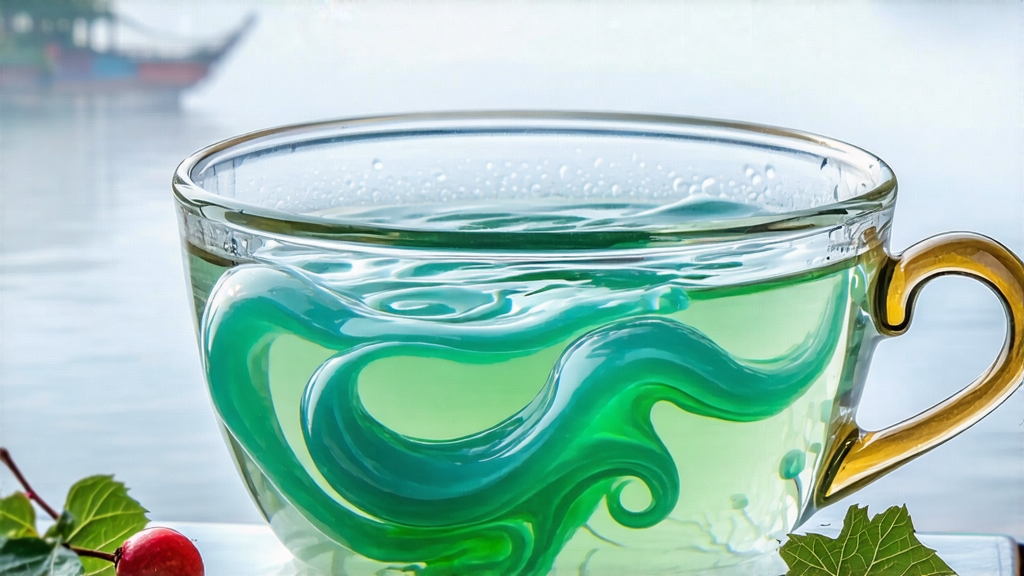
Tucked between the mist-laden hills of Dongting Mountain and the vast mirror of Taihu Lake in Jiangsu Province, Biluochun—literally “Green Snail Spring”—is one of China’s ten most celebrated teas, yet it remains curiously under-celebrated abroad. To the uninitiated, its name evokes a tiny mollusk; to the initiated, it conjures the scent of fresh apricot blossoms drifting across an orchard after rain. This essay invites the global tea lover to journey through the micro-world of Biluochun, from Tang-dynasty court chronicles to the modern gaiwan, decoding its history, terroir, craftsmanship, and the quiet ritual that coaxes its full poetry into a cup.
-
Historical Echoes
The first reliably dated mention appears in the Tang-era Classic of Tea (c. 760 CE), where Lu Yu lists “Xia Sha Ren Xiang” among the lake region’s tributes. By the late Ming, the tea had acquired its modern name when the Kangxi Emperor, touring the south in 1699, found the infusion so fragrant that he rechristened it “Biluochun” to honor its jade coils and spring harvest. Maritime trade routes carried it to Tsarist Saint Petersburg and London coffeehouses by 1800, where it was marketed as “Pi Lo Chun—imperial snail tea,” a curiosity that fetched more than silver-tip Assam. Today, 1,200 hectares of certified gardens cling to the rocky, peach-and-plum interplanted slopes, producing barely 120 tons annually—scarcity that fuels both reverence and imitation. -
Terroir: Where Lake Meets Blossom
Dongting Mountain is actually two islands—East and West—rising from Taihu’s shallows. The lake’s large thermal mass moderates temperature, creating nightly fogs that act like a slow-release humidifier. Soils are quartz-sandstone derived, porous and slightly acidic (pH 5.2–5.7), forcing roots to struggle and concentrate amino acids. Most distinctive is the biodiversity: tea bushes share terraces with loquat, plum, apricot, and Osmanthus trees. When these plants bloom in late March, their pollen and nectar volatiles settle on tea leaves, accounting for the tea’s signature fruity-floral bouquet that chemists identify as high levels of geraniol and linalool oxides. -
Cultivars and Grades
While the original landrace is the small-leaf “Dongting Qunti,” clonal selections such as “Biluochun #5” (higher cold tolerance) and “Su Cha #3” (earlier budding) now coexist. Grading follows a 1–5 scale based on picking standard and coil tightness:- Special Grade: one bud plus an just-unfolded leaf ≤15 mm, 6,000 coils per 100 g.
- Grade 1: one bud plus one leaf ≤20 mm.
- Grades 2–5 progressively allow larger leaf and looser twist.
Only Special and Grade 1 qualify for the state-protected “Original Origin” label; lower grades usually come outlying counties like Yixing or Jintan.
-
Craftsmanship: The 70-Minute Ballet
Harvest begins at dawn when air temperature is 10–13 °C and leaf moisture above 78 %. Pickers plow through hedges every three days, taking only the apical 12 mm. Within 30 minutes, baskets arrive at the village workshop where three masters orchestrate a ten-step kill-green sequence:
a. Wilting: 2 min on bamboo trays to reduce surface moisture to 72 %.
b. High-heat kill-green: 260 °C, 3 min, hand-tossed in a 90 cm iron wok to deactivate polyphenol oxidase.
c. Rolling-hot: temperature dropped to 80 °C, leaves kneaded for 4 min to initiate the spiral.
d. First twist: leaves transferred to a straw mat, gently rubbed clockwise for 7 min; moisture now 55 %.
e. Low-heat shaping: back to wok at 60 °C, 12 min, forming the signature “snowy pekoe” visible fuzz.
f. Second twist: 5 min on mat, coil tightens.
g. Drying: wok at 50 °C, 15 min, moisture to 20 %.
h. Cooling: